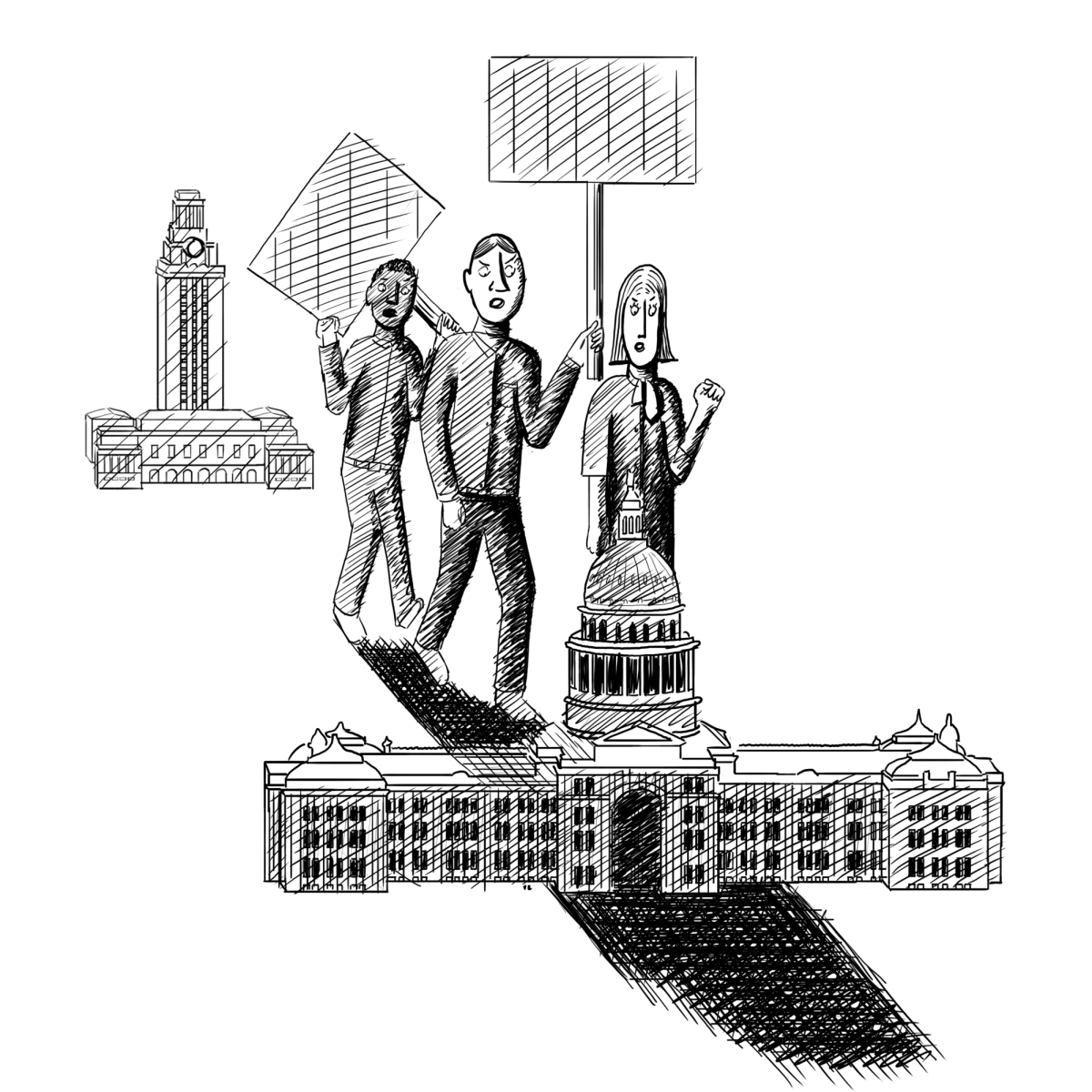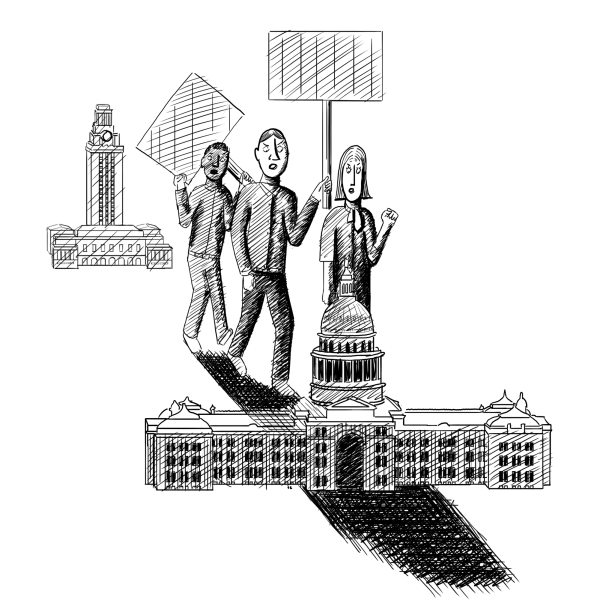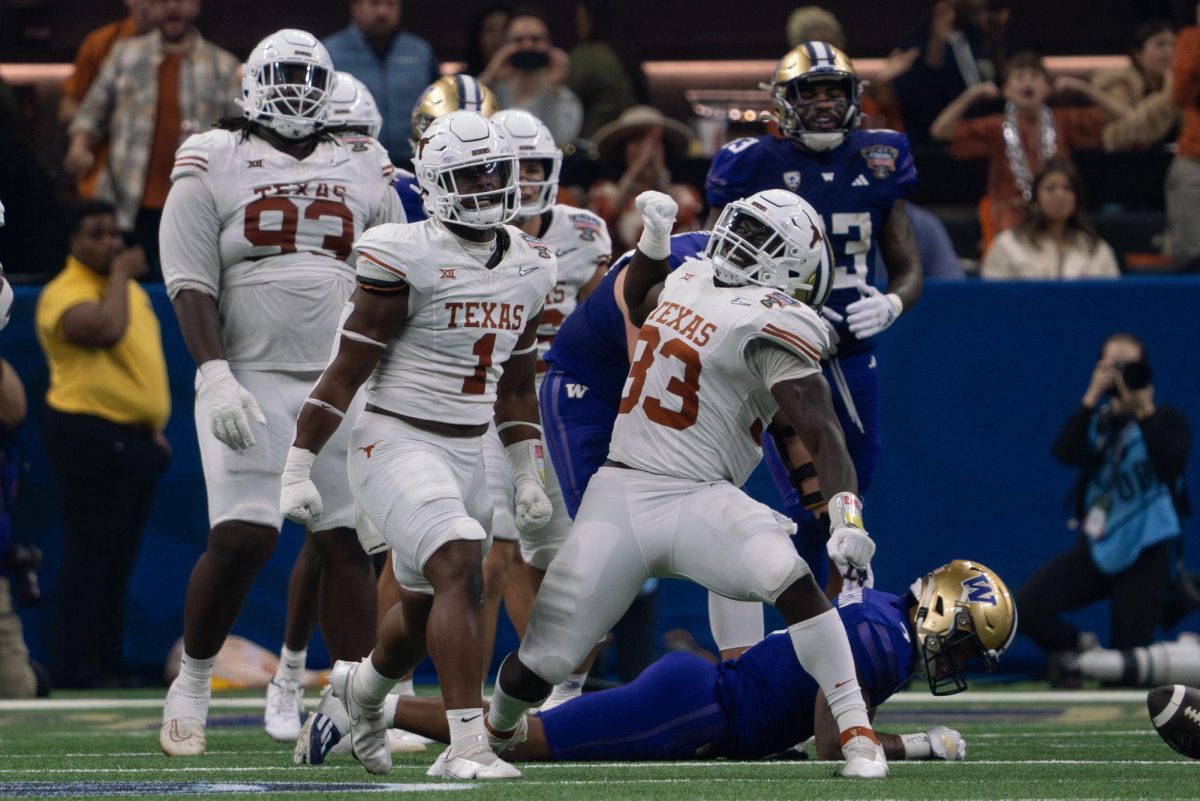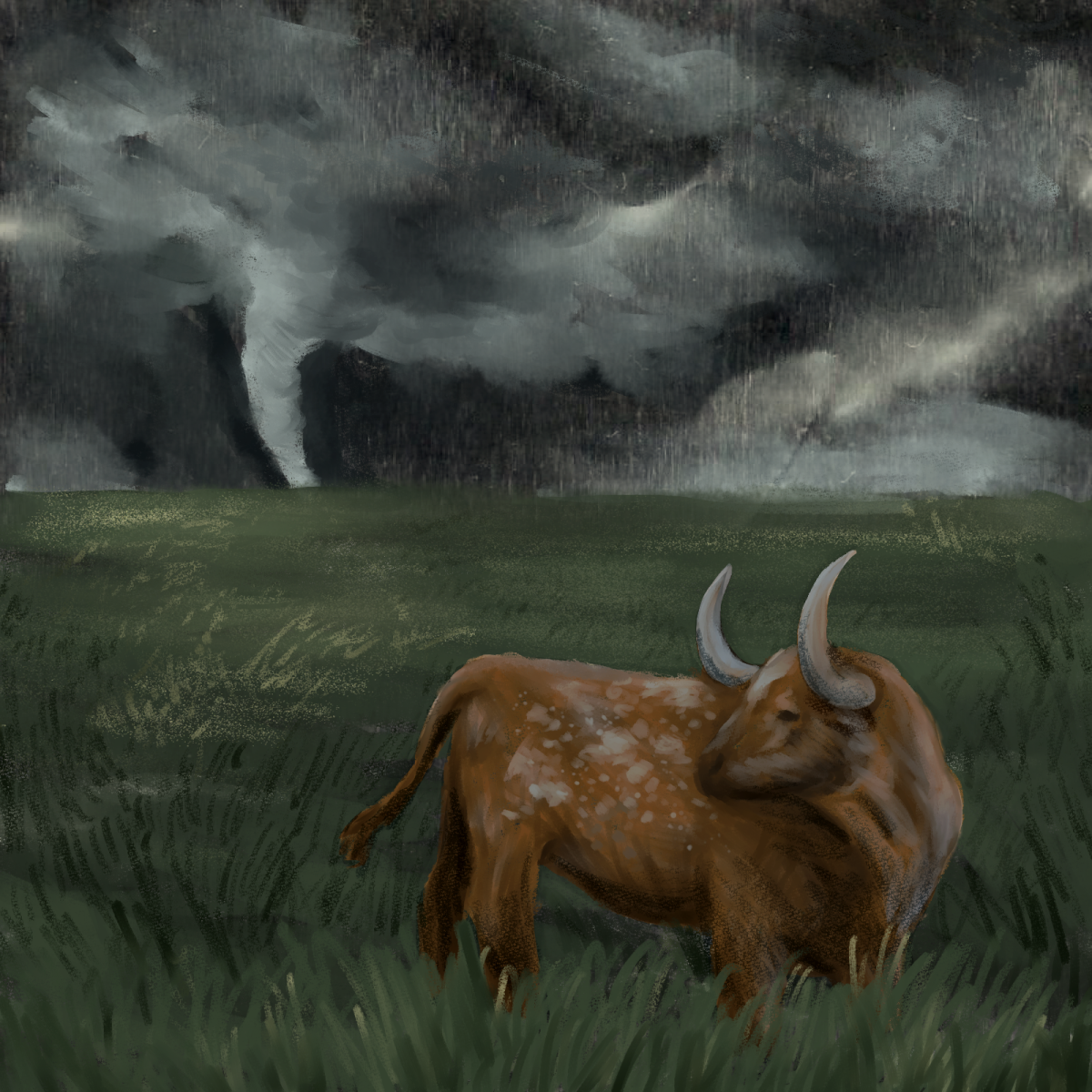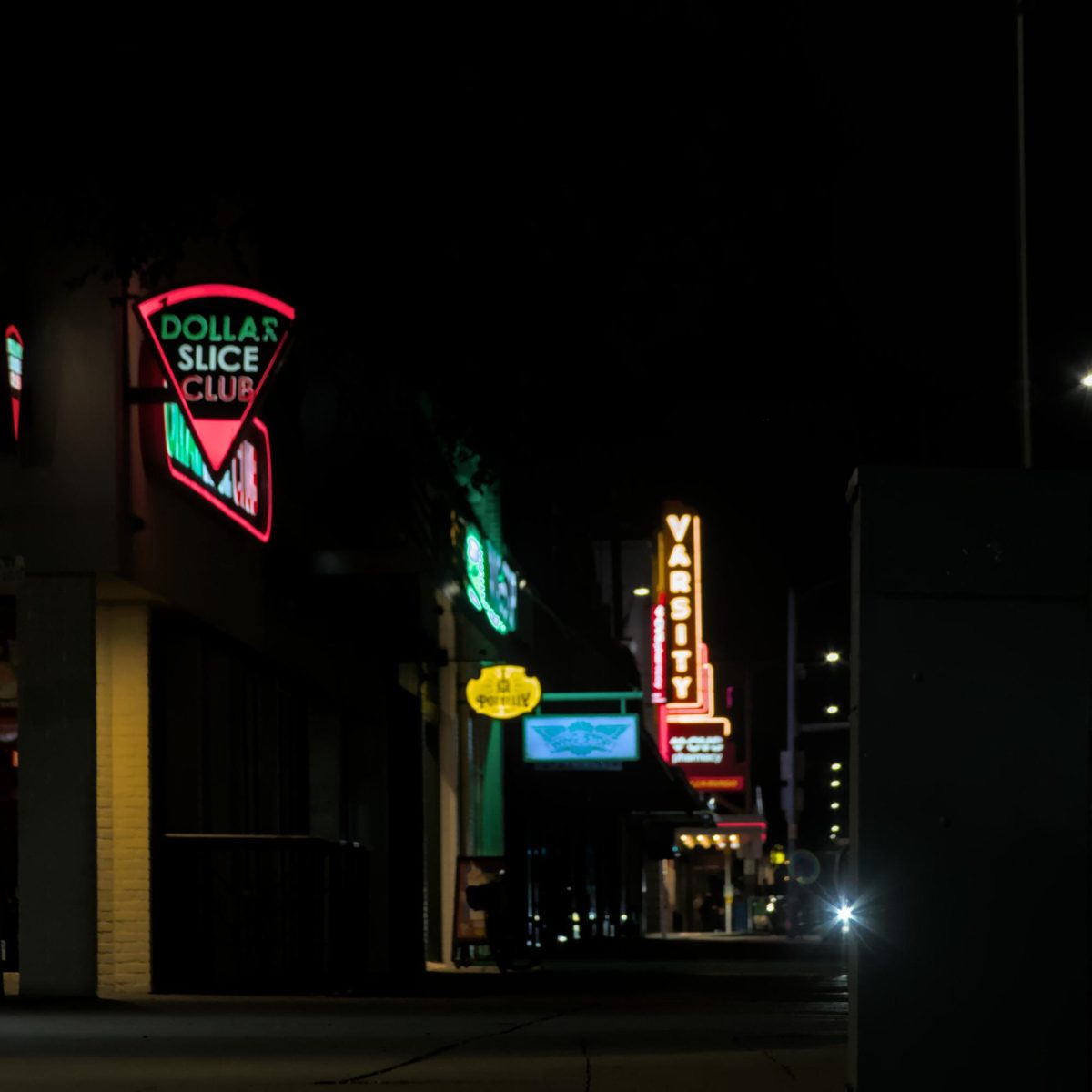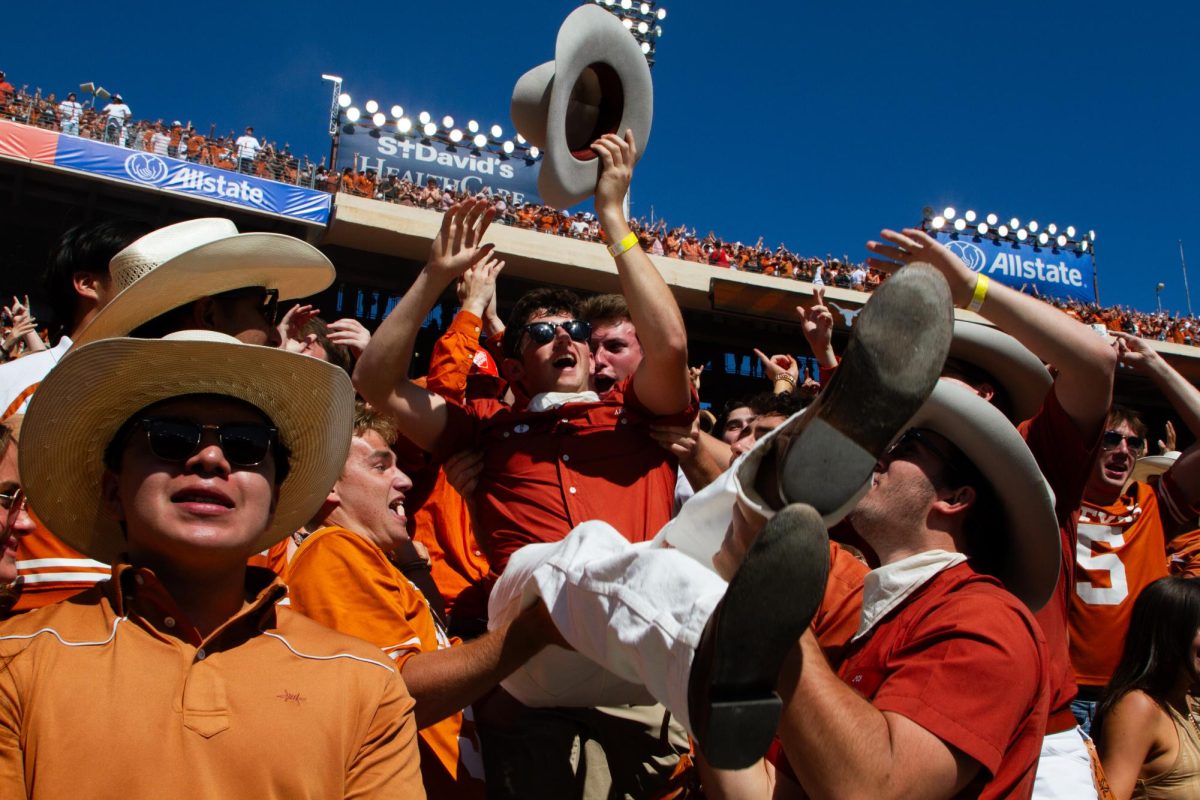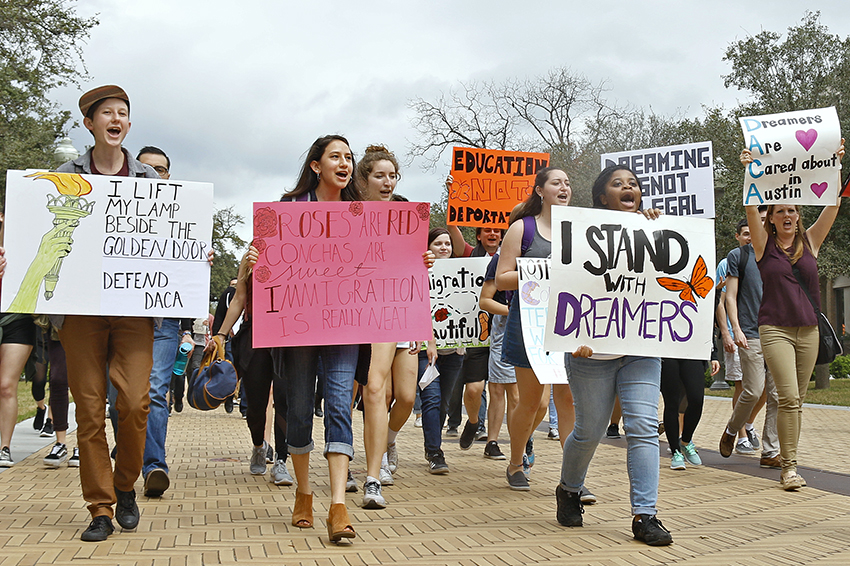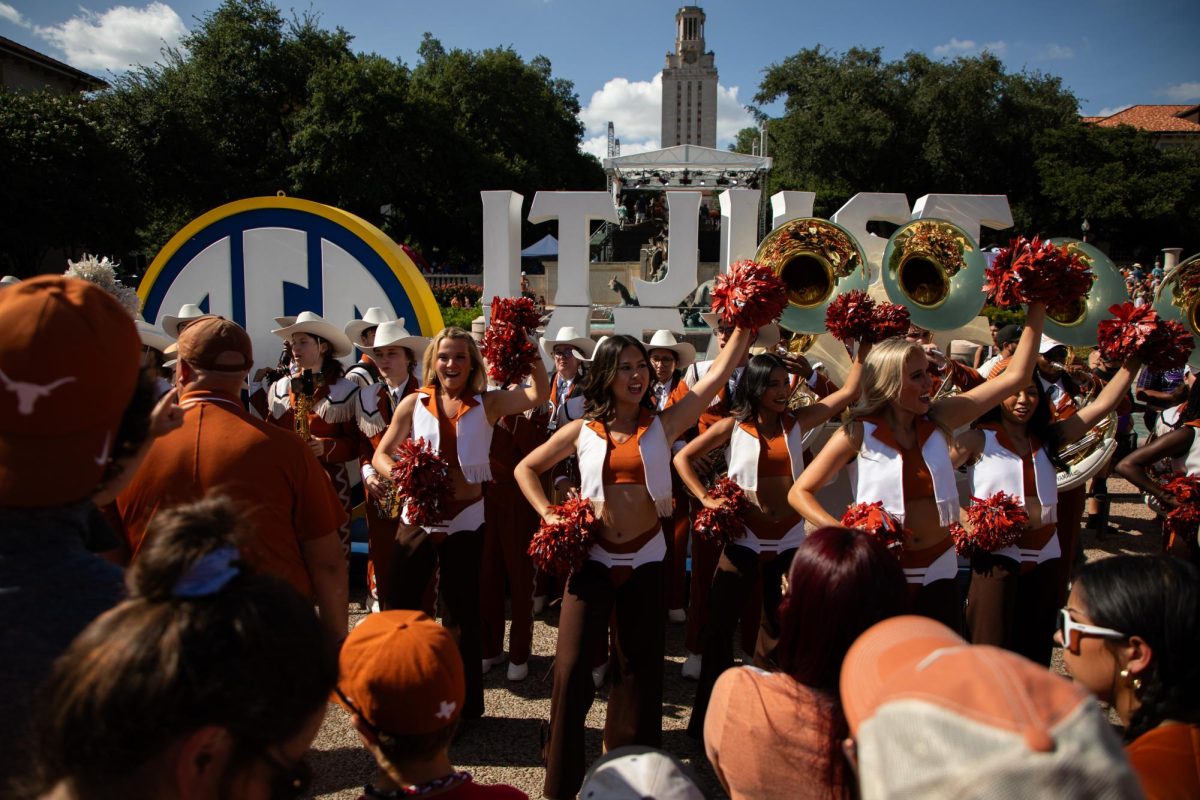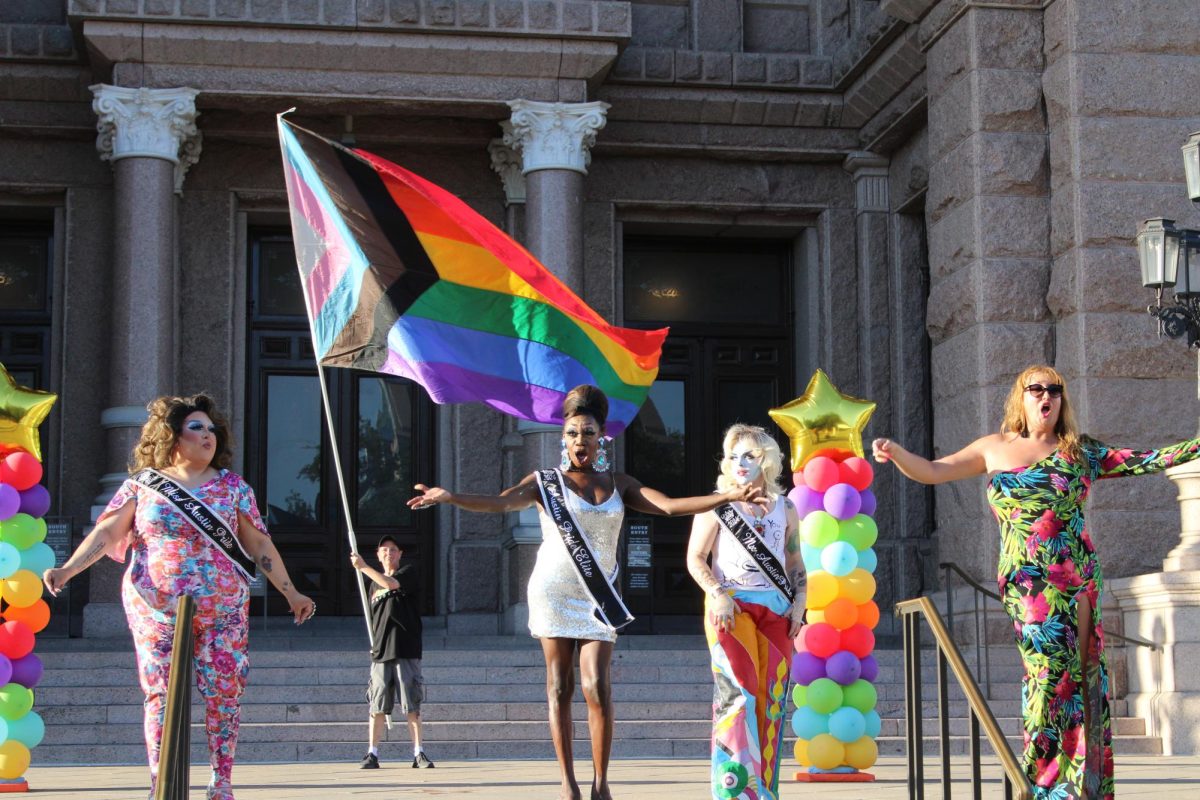When thinking about student protests, images of students conducting sit-ins for civil rights, marching against the Vietnam War or walking for Roe v. Wade might come to mind. However, tucked between national and international movements, protests about local issues affecting students on campus, from concerns about academic freedom to First Amendment violations, have come to UT.
Here are the stories of two lesser-known student protests that left lasting impacts on campus.
The Beginning of Longhorn Protests and the 1944 March for Academic Freedom
Longhorns have a rich history of making their voices heard. However, protests on campus were virtually nonexistent during the University’s first 40 years. This is partially because tuition, which was subsidized by the Texas government, was free from the University’s inception in 1883 until the 1920s.
“The UT administration wanted to make sure Texas legislators didn’t harbor any second thoughts about funding college educations,” wrote Jim Nicar, founder of the UT History Corner blog, in a 1994 article for Alcalde Magazine. “Attending classes and studying was in. Protests and demonstrations were discouraged.”
However, this changed in May 1917, when students led one of the first protests on campus against Texas Gov. Jim Ferguson, who fired professors with political opinions differing from his own. The demonstration led to statewide backlash and Ferguson’s impeachment.
While this marked the first time Longhorns marched for academic freedom, it wouldn’t be the last. In 1944, the issue would come up again, and this time on a much larger scale.
In the late 1930s, following the implementation of President Franklin Roosevelt’s New Deal economic policies, W. Lee O’Daniel became the Texas governor and promised to pull back on Roosevelt’s liberal programs.
“There was a highly conservative party in charge in Texas (at the time),” Nicar said. “They thought what was being taught on college campuses in all state universities and vectors were far too liberal.”
The Board of Regents appointed by O’Daniel and his successor began demanding the termination of several UT professors who taught New Deal economics. The board even advocated for legislation to eradicate tenure and allow them to fire any professor for any reason, without explanation.
Increasing tensions between the Board of Regents and then UT President Homer Rainey came to a head in October 1944. Rainey publicly denounced the board’s decision to ban the “USA” trilogy by John Dos Passos from class curriculums, which they claimed portrayed liberal economics. On Nov. 1, 1944, the board of regents fired Rainey, leading to weeks of protests from students.
It started with a strike — following the news of Rainey’s firing, many students boycotted classes for a week, instead using the time to write letters of support for Rainey.
Then in early November, 8,000 Longhorns marched from the Tower through downtown Austin carrying a coffin with the words “Academic Freedom” marked on it. Austin city officials designated the demonstration an official funeral procession, clearing the streets for students to march in tandem with the Longhorn Band, who played Chopin’s “Funeral March.”
The protests made national headlines, with overwhelming support for the demonstrating students and Rainey.
“Dr. Rainey believes in academic freedom,” the American Association of University Professors wrote in a 1946 bulletin. “Dr. Rainey also believes that the public has an interest in academic freedom and that without academic freedom an educational institution cannot fulfill its obligation to its students and to the public.”
Despite the onslaught of support, Rainey was never reinstated as University president. However, while the students’ immediate demands were never met, the demonstration left lasting, tangible effects on campus for nearly a decade.
“The American Association of University Professors censured UT for (eight) years,” Nicar said. “The following year, we were on probation with our accreditation agency. … It really hurt our reputation.”
Although the students didn’t get what they wanted, they made sure the University felt the effects of their opposition in full force. In the winter of 1944, Longhorns stood together to make clear that they would not stand for outside forces influencing what they could or could not teach, what they could or could not learn and what they could or could not read.
The Iranian Student Protests and the Fight for Free Speech in 1980
The ‘60s and ‘70s ushered in a new age of activism. With 18-year-olds being sent to Vietnam and freshly able to vote after the ratification of the 26th Amendment, student protests became actors of political change.
“I think (those previous movements) gave students momentum that they could bring about change with the work they did,” said Nuri Vallbona, adjunct journalism professor and ‘79 UT graduate.
In January 1980, UT would go on to make international headlines for the arrests of 24 Iranian students peacefully protesting an appearance by Iranian diplomat Fereydoun Hoveyda and the subsequent arrest of Mark McKinnon, The Daily Texan’s editor-in-chief at the time, for refusing to provide law enforcement with unpublished photos of the incident.
“There was a lot of pent-up anger in the United States about the (1980 American) hostage situation, which I argue was really what fueled the response, which I thought was way overboard, to the student demonstrations,” McKinnon said. “The students were demonstrating very modestly. … Nothing violent.”
Iranian students were protesting the platforming of former Iranian diplomat Hoveyda, who was closely associated with Mohammad Reza Pahlavi, Iran’s Shah and the purveyor of total dictatorship in their homeland.
The protesters assembled peacefully at the Texas Union and made several attempts to disrupt Hoveyda’s speech by yelling and chanting. Members of law enforcement met the protestors with violence, forcibly removing the students from the building and arresting them.
“American students need to recognize that this is a lesson for them,” defendant Yahya Al-Omari told the Texan in 1980. “The University wants to strike at the student movement, and it began by striking at the foreign students who are the weakest link in the movement.”
The event was assigned to Jan Sonnenmair, a Texan photo staffer at the time.
“When law enforcement became involved, they dragged them out of the building and arrested them,” Sonnenmair said.
“It was very shocking. … I don’t think we’ve had anything that aggressive or interactive with law enforcement that I remember in the time I was (at UT).”
The disturbance from the protest and following arrests caused the administration to cancel the rest of the symposium on Middle Eastern events, which were set to be held the day after. Twenty-four students were arrested on the day of the protest and 16 were jailed for nine days and charged with a Class B misdemeanor for disrupting the event in a months-long trial.
Two months later, Sonnenmair and the Texan received a subpoena from the sheriff’s office, asking for Sonnenmair’s negatives of the event to use as evidence to help identify the student defendants.
“I did what any responsible American newspaper editor would do, which is (I) refused to comply to help prosecutors do their job,” McKinnon said.
Difficulties identifying each of the student protestors held back the trial. In June, McKinnon was subpoenaed again, and would eventually be found in contempt of the court. He went on to serve jail time in September 1980, all while still enrolled at UT.
“The procedure is that ethically (journalists) do not aid law enforcement in their investigations, on one side or the other,” Sonnenmair said. “They had full access to anything that was published, but they wouldn’t have access to my negatives.”
Armed with national support from big-time newspapers, McKinnon received legal aid from The New York Times and The Washington Post and served minimal time. The prosecutors never received the negatives.
Four of the 16 defendants were acquitted after prosecutors failed to prove their presence at the January protest. The other 12 students were found guilty and were each fined $200.
News of the case received international coverage, amplified by the events of the hostage crisis.
“The straighter you stand, the harder the wind blows; but it’s worth taking a stand,” McKinnon said. “Sometimes when the odds are against you, and there are bigger forces at play, you can see how the state can use a heavy hand to try and oppress unrest or demonstrations, (but) this is a real bedrock principle of American democracy, that we have the right to protest.”



